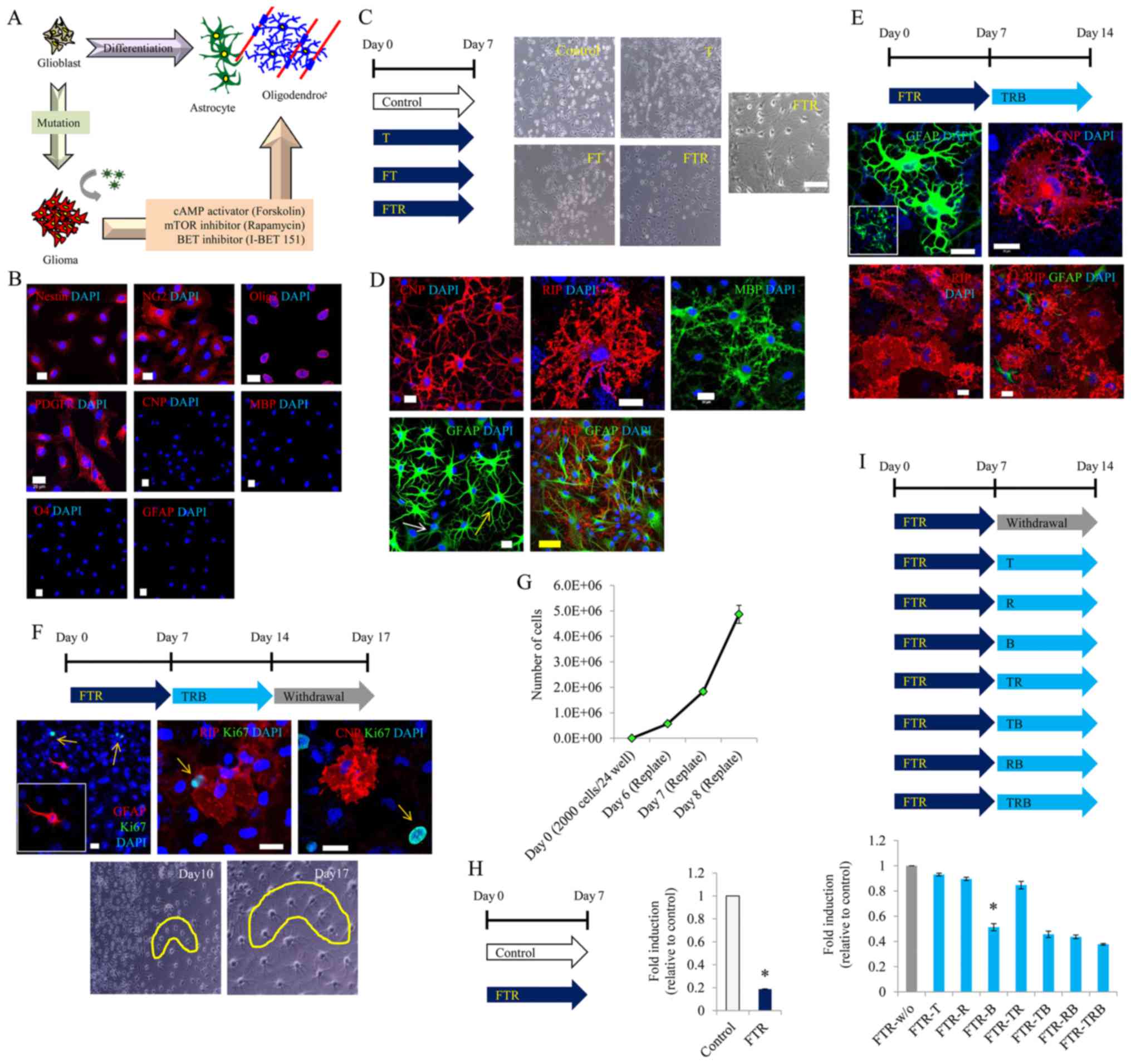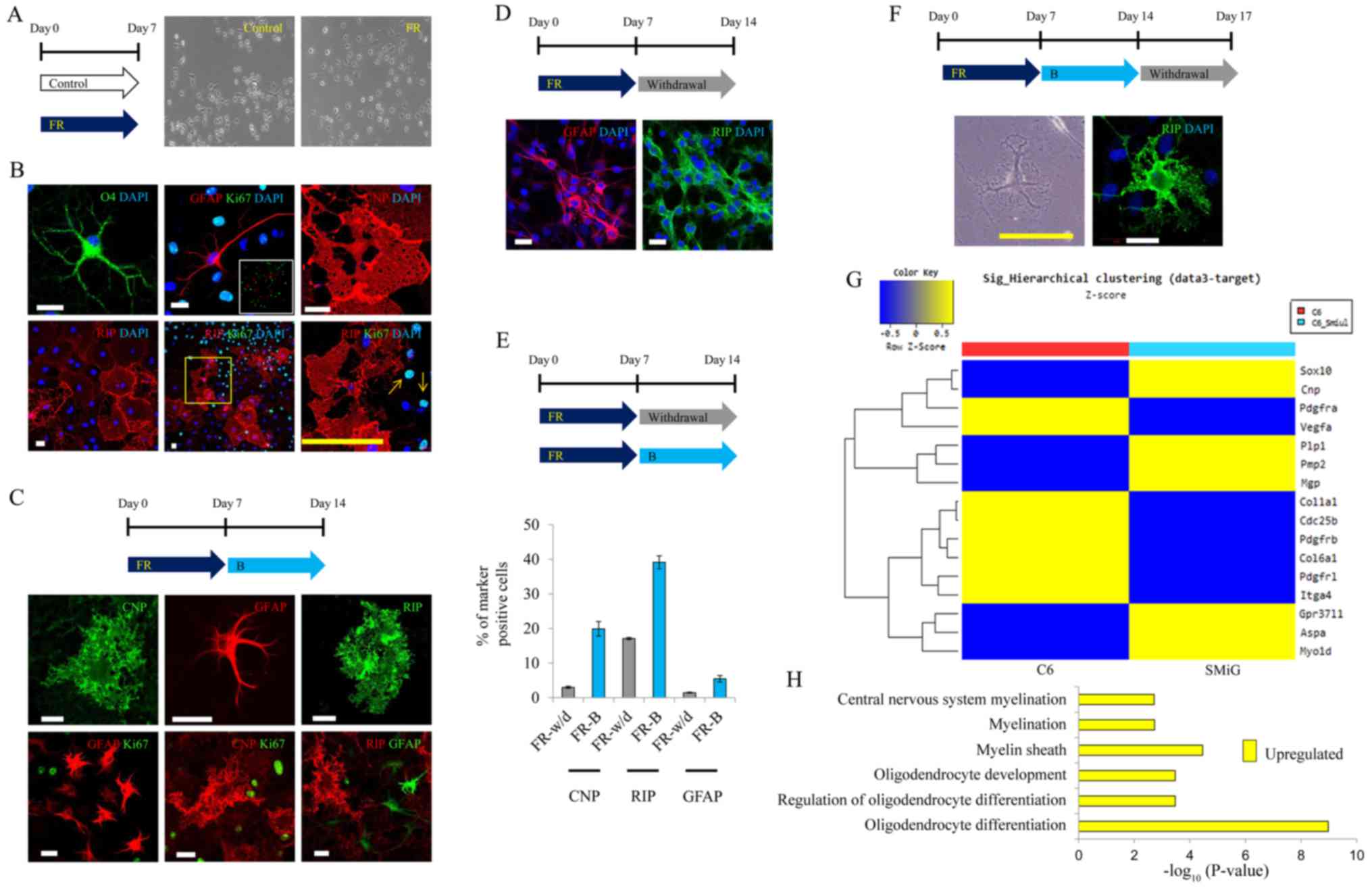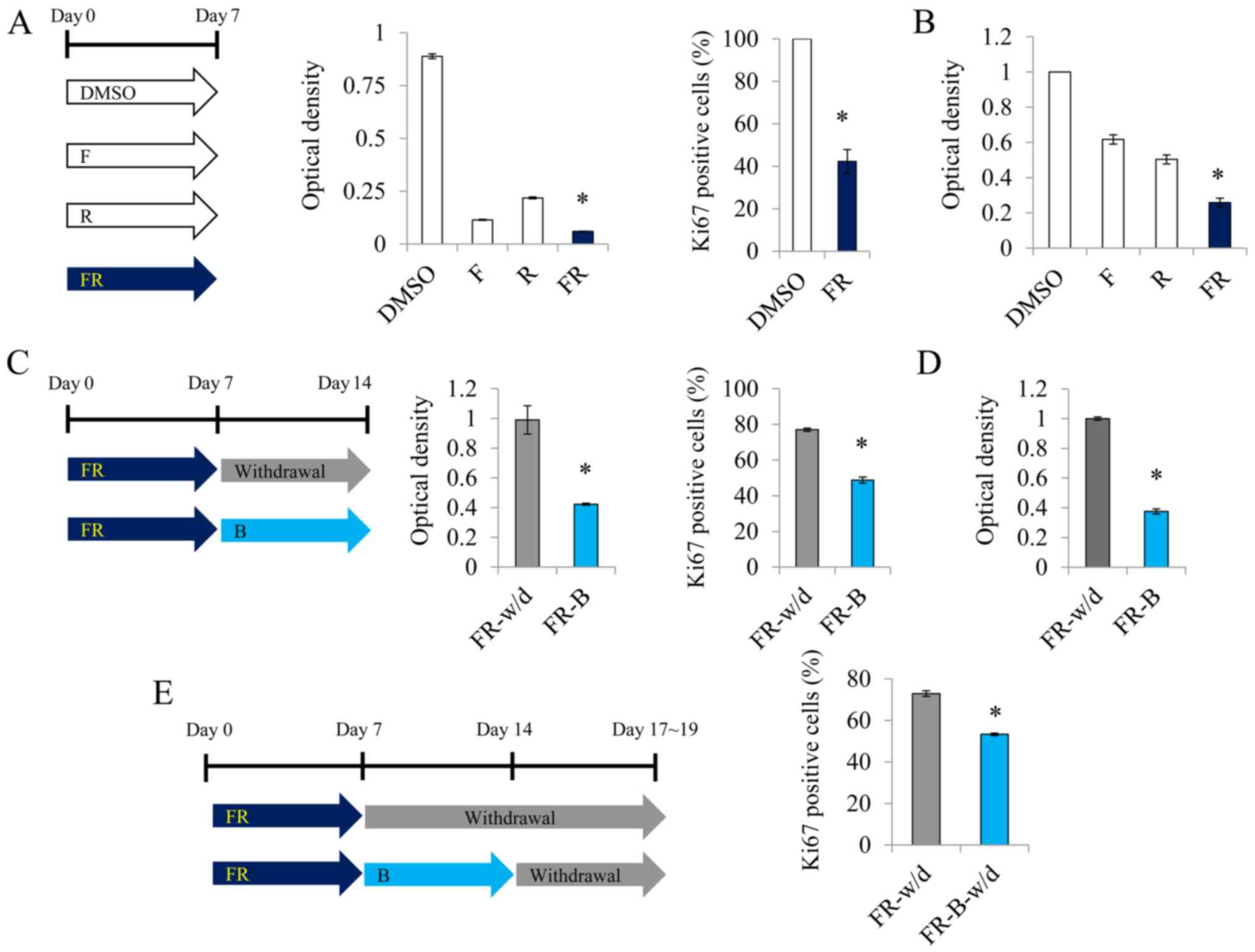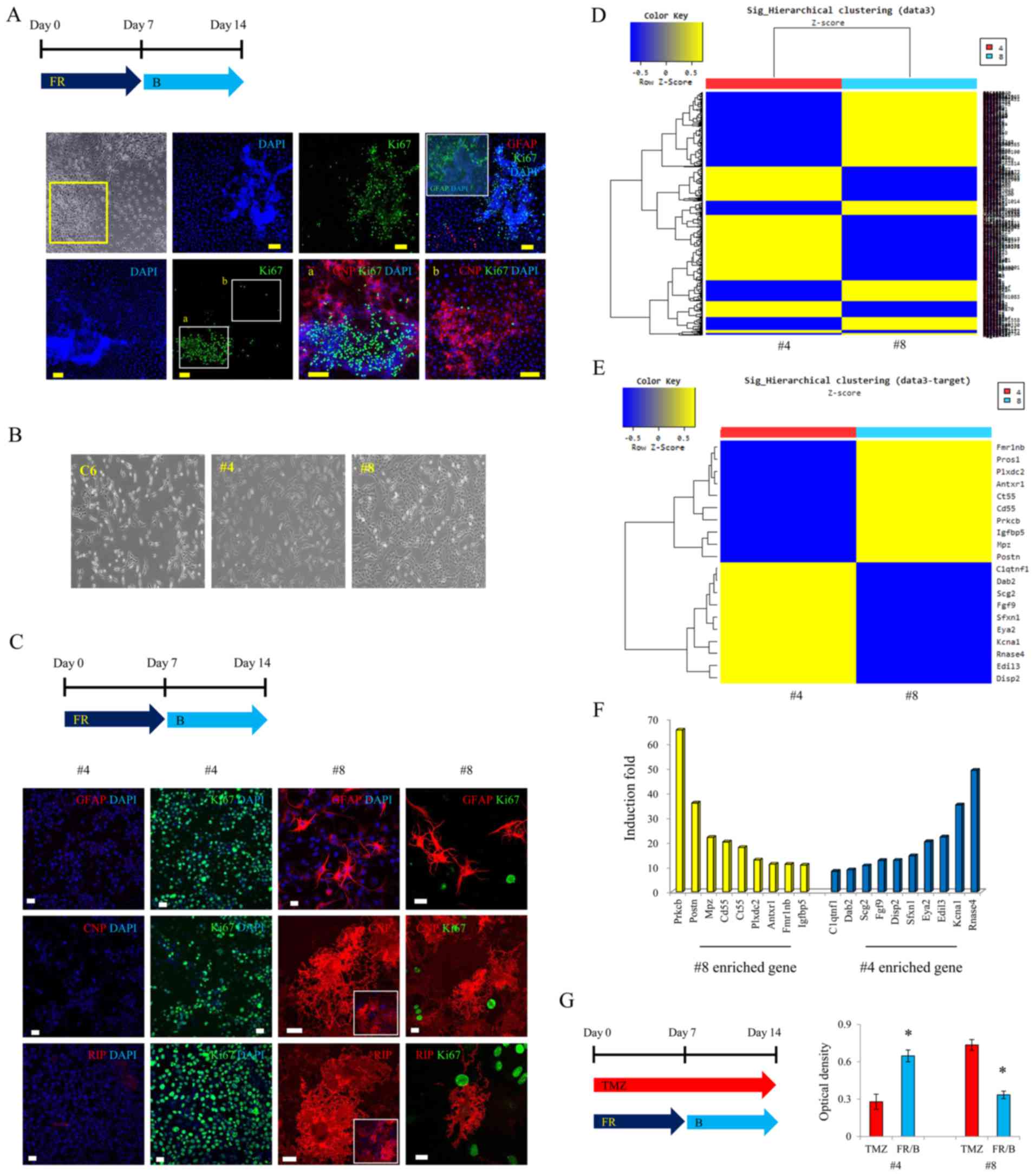|
1
|
Thier M, Wörsdörfer P, Lakes YB, Gorris R,
Herms S, Opitz T, Seiferling D, Quandel T, Hoffmann P, Nöthen MM,
et al: Direct conversion of fibroblasts into stably expandable
neural stem cells. Cell Stem Cell. 10:473–479. 2012. View Article : Google Scholar : PubMed/NCBI
|
|
2
|
Tian E, Sun G, Sun G, Chao J, Ye P, Warden
C, Riggs AD and Shi Y: Small-molecule-based lineage reprogramming
creates functional astrocytes. Cell Rep. 16:781–792. 2016.
View Article : Google Scholar : PubMed/NCBI
|
|
3
|
Zhang M, Lin YH, Sun YJ, Zhu S, Zheng J,
Liu K, Cao N, Li K, Huang Y and Ding S: Pharmacological
reprogramming of fibroblasts into neural stem cells by
signaling-directed transcriptional activation. Cell Stem Cell.
18:653–667. 2016. View Article : Google Scholar : PubMed/NCBI
|
|
4
|
Caiazzo M, Giannelli S, Valente P, Lignani
G, Carissimo A, Sessa A, Colasante G, Bartolomeo R, Massimino L,
Ferroni S, et al: Direct conversion of fibroblasts into functional
astrocytes by defined transcription factors. Stem Cell Reports.
4:pp. 25–36. 2015, View Article : Google Scholar : PubMed/NCBI
|
|
5
|
Cheng L, Hu W, Qiu B, Zhao J, Yu Y, Guan
W, Wang M, Yang W and Pei G: Generation of neural progenitor cells
by chemical cocktails and hypoxia. Cell Res. 25:645–646. 2015.
View Article : Google Scholar : PubMed/NCBI
|
|
6
|
Xue Y, Ouyang K, Huang J, Zhou Y, Ouyang
H, Li H, Wang G, Wu Q, Wei C, Bi Y, et al: Direct conversion of
fibroblasts to neurons by reprogramming PTB-regulated microRNA
circuits. Cell. 152:82–96. 2013. View Article : Google Scholar : PubMed/NCBI
|
|
7
|
Ladewig J, Mertens J, Kesavan J, Doerr J,
Poppe D, Glaue F, Herms S, Wernet P, Kögler G, Müller FJ, et al:
Small molecules enable highly efficient neuronal conversion of
human fibroblasts. Nat Methods. 9:575–578. 2012. View Article : Google Scholar : PubMed/NCBI
|
|
8
|
Pang ZP, Yang N, Vierbuchen T, Ostermeier
A, Fuentes DR, Yang TQ, Citri A, Sebastiano V, Marro S, Südhof TC
and Wernig M: Induction of human neuronal cells by defined
transcription factors. Nature. 476:220–223. 2011. View Article : Google Scholar : PubMed/NCBI
|
|
9
|
Ambasudhan R, Talantova M, Coleman R, Yuan
X, Zhu S, Lipton SA and Ding S: Direct reprogramming of adult human
fibroblasts to functional neurons under defined conditions. Cell
Stem Cell. 9:113–118. 2011. View Article : Google Scholar : PubMed/NCBI
|
|
10
|
Su Z, Zang T, Liu ML, Wang LL, Niu W and
Zhang CL: Reprogramming the fate of human glioma cells to impede
brain tumor development. Cell Death Dis. 5:e14632014. View Article : Google Scholar : PubMed/NCBI
|
|
11
|
Guichet PO, Bieche I, Teigell M, Serguera
C, Rothhut B, Rigau V, Scamps F, Ripoll C, Vacher S, Taviaux S, et
al: Cell death and neuronal differentiation of glioblastoma
stem-like cells induced by neurogenic transcription factors. Glia.
61:225–239. 2013. View Article : Google Scholar : PubMed/NCBI
|
|
12
|
Hu W, Qiu B, Guan W, Wang Q, Wang M, Li W,
Gao L, Shen L, Huang Y, Xie G, et al: Direct conversion of normal
and Alzheimer's disease human fibroblasts into neuronal cells by
small molecules. Cell Stem Cell. 17:204–212. 2015. View Article : Google Scholar : PubMed/NCBI
|
|
13
|
Li X, Zuo X, Jing J, Ma Y, Wang J, Liu D,
Zhu J, Du X, Xiong L, Du Y, et al: Small-molecule-driven direct
reprogramming of mouse fibroblasts into functional neurons. Cell
Stem Cell. 17:195–203. 2015. View Article : Google Scholar : PubMed/NCBI
|
|
14
|
Galvao RP, Kasina A, McNeill RS, Harbin
JE, Foreman O, Verhaak RG, Nishiyama A, Miller CR and Zong H:
Transformation of quiescent adult oligodendrocyte precursor cells
into malignant glioma through a multistep reactivation process.
Proc Natl Acad Sci USA. 111:E4214–E4223. 2014. View Article : Google Scholar : PubMed/NCBI
|
|
15
|
Hayes J, Thygesen H, Droop A, Hughes TA,
Westhead D, Lawler SE, Wurdak H and Short SC: Prognostic microRNAs
in high-grade glioma reveal a link to oligodendrocyte precursor
differentiation. Oncoscience. 2:252–262. 2014. View Article : Google Scholar : PubMed/NCBI
|
|
16
|
Kim JB, Lee H, Araúzo-Bravo MJ, Hwang K,
Nam D, Park MR, Zaehres H, Park KI and Lee SJ: Oct4-induced
oligodendrocyte progenitor cells enhance functional recovery in
spinal cord injury model. EMBO J. 34:2971–2983. 2015. View Article : Google Scholar : PubMed/NCBI
|
|
17
|
Tyler WA, Gangoli N, Gokina P, Kim HA,
Covey M, Levison SW and Wood TL: Activation of the mammalian target
of rapamycin (mTOR) is essential for oligodendrocyte
differentiation. J Neurosci. 29:6367–6378. 2009. View Article : Google Scholar : PubMed/NCBI
|
|
18
|
Garnier JM, Sharp PP and Burns CJ: BET
bromodomain inhibitors: A patent review. Expert Opin Ther Pat.
24:185–199. 2014. View Article : Google Scholar : PubMed/NCBI
|
|
19
|
Shi J and Vakoc CR: The mechanisms behind
the therapeutic activity of BET bromodomain inhibition. Mol Cell.
54:728–736. 2014. View Article : Google Scholar : PubMed/NCBI
|
|
20
|
Gacias M, Gerona-Navarro G, Plotnikov AN,
Zhang G, Zeng L, Kaur J, Moy G, Rusinova E, Rodriguez Y, Matikainen
B, et al: Selective chemical modulation of gene transcription
favors oligodendrocyte lineage progression. Chem Biol. 21:841–854.
2014. View Article : Google Scholar : PubMed/NCBI
|
|
21
|
Meyer M, Reimand J, Lan X, Head R, Zhu X,
Kushida M, Bayani J, Pressey JC, Lionel AC, Clarke ID, et al:
Single cell-derived clonal analysis of human glioblastoma links
functional and genomic heterogeneity. Proc Natl Acad Sci USA.
112:851–856. 2015. View Article : Google Scholar : PubMed/NCBI
|
|
22
|
Tang Y, He W, Wei Y, Qu Z, Zeng J and Qin
C: Screening key genes and pathways in glioma based on gene set
enrichment analysis and meta-analysis. J Mol Neurosci. 50:324–332.
2013. View Article : Google Scholar : PubMed/NCBI
|
|
23
|
Nanda A, Buckhaults P, Seaman S, Agrawal
N, Boutin P, Shankara S, Nacht M, Teicher B, Stampfl J, Singh S, et
al: Identification of a binding partner for the endothelial cell
surface proteins TEM7 and TEM7R. Cancer Res. 64:8507–8511. 2004.
View Article : Google Scholar : PubMed/NCBI
|
|
24
|
Davies G, Rmali KA, Watkins G, Mansel RE,
Mason MD and Jiang WG: Elevated levels of tumour endothelial
marker-8 in human breast cancer and its clinical significance. Int
J Oncol. 29:1311–1317. 2006.PubMed/NCBI
|
|
25
|
Song MH, Kim YR, Lee JW, Lee CH and Lee
SY: Cancer/testis antigen NY-SAR-35 enhances cell proliferation,
migration, and invasion. Int J Oncol. 48:569–576. 2016. View Article : Google Scholar : PubMed/NCBI
|
|
26
|
Tomiyoshi G, Nakanishi A, Takenaka K,
Yoshida K and Miki Y: Novel BRCA2-interacting protein BJ-HCC-20A
inhibits the induction of apoptosis in response to DNA damage.
Cancer Sci. 99:747–754. 2008. View Article : Google Scholar : PubMed/NCBI
|
|
27
|
Ikeda J, Morii E, Liu Y, Qiu Y, Nakamichi
N, Jokoji R, Miyoshi Y, Noguchi S and Aozasa K: Prognostic
significance of CD55 expression in breast cancer. Clin Cancer Res.
14:4780–4786. 2008. View Article : Google Scholar : PubMed/NCBI
|
|
28
|
Park SY, Piao Y, Jeong KJ, Dong J and de
Groot JF: Periostin (POSTN) regulates tumor resistance to
antiangiogenic therapy in glioma models. Mol Cancer Ther.
15:2187–2197. 2016. View Article : Google Scholar : PubMed/NCBI
|
|
29
|
Che Mat MF, Abdul Murad NA, Ibrahim K,
Mohd Mokhtar N, Wan Ngah WZ, Harun R and Jamal R: Silencing of
PROS1 induces apoptosis and inhibits migration and invasion of
glioblastoma multiforme cells. Int J Oncol. 49:2359–2366. 2016.
View Article : Google Scholar : PubMed/NCBI
|
|
30
|
Annovazzi L, Mellai M, Caldera V, Valente
G and Schiffer D: SOX2 expression and amplification in gliomas and
glioma cell lines. Cancer Genomics Proteomics. 8:139–147.
2011.PubMed/NCBI
|
|
31
|
Schmitz M, Temme A, Senner V, Ebner R,
Schwind S, Stevanovic S, Wehner R, Schackert G, Schackert HK,
Fussel M, et al: Identification of SOX2 as a novel
glioma-associated antigen and potential target for T cell-based
immunotherapy. Br J Cancer. 96:1293–1301. 2007. View Article : Google Scholar : PubMed/NCBI
|
|
32
|
Phi JH, Park SH, Kim SK, Paek SH, Kim JH,
Lee YJ, Cho BK, Park CK, Lee DH and Wang KC: Sox2 expression in
brain tumors: A reflection of the neuroglial differentiation
pathway. Am J Surg Pathol. 32:103–112. 2008. View Article : Google Scholar : PubMed/NCBI
|
|
33
|
Wehler TC, Frerichs K, Graf C, Drescher D,
Schimanski K, Biesterfeld S, Berger MR, Kanzler S, Junginger T,
Galle PR, et al: PDGFRalpha/beta expression correlates with the
metastatic behavior of human colorectal cancer: A possible
rationale for a molecular targeting strategy. Oncol Rep.
19:697–704. 2008.PubMed/NCBI
|
|
34
|
Heldin CH: Targeting the PDGF signaling
pathway in tumor treatment. Cell Commun Signal. 11:972013.
View Article : Google Scholar : PubMed/NCBI
|
|
35
|
Golfinos JG, Norman SA, Coons SW, Norman
RA, Ballecer C and Scheck AC: Expression of the genes encoding
myelin basic protein and proteolipid protein in human malignant
gliomas. Clin Cancer Res. 3:799–804. 1997.PubMed/NCBI
|
|
36
|
Popko B, Pearl DK, Walker DM, Comas TC,
Baerwald KD, Burger PC, Scheithauer BW and Yates AJ: Molecular
markers that identify human astrocytomas and oligodendrogliomas. J
Neuropathol Exp Neurol. 61:329–338. 2002. View Article : Google Scholar : PubMed/NCBI
|
|
37
|
Nakada M, Kita D, Watanabe T, Hayashi Y,
Teng L, Pyko IV and Hamada J: Aberrant signaling pathways in
glioma. Cancers. 3:3242–3278. 2011. View Article : Google Scholar : PubMed/NCBI
|
|
38
|
Motegi H, Kamoshima Y, Terasaka S,
Kobayashi H and Houkin K: Type 1 collagen as a potential niche
component for CD133-positive glioblastoma cells. Neuropathology.
34:378–385. 2014.PubMed/NCBI
|













